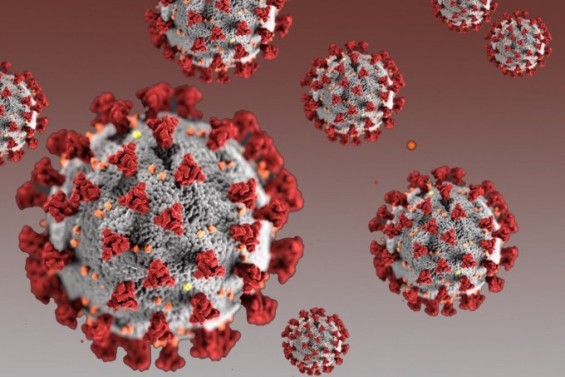
It is the three-dimensional structure of the virus (SARS-CoV-2) that causes Corona 19. Mutations in the spike protein, which have a bumpy shape on the surface, can increase infectivity. Provided by the US Centers for Disease Control and Prevention (CDC)
A case of a mutation such as a British mutation has been confirmed in a patient who has suffered from a novel coronavirus infection (COVID-19, Corona 19) for a long time. This patient was found to have a rapid increase in variability in the body after receiving plasma therapy, which uses the plasma of a cure for treatment.
The research team of Ravindra Gupta, a professor of clinical microbiology at the University of Cambridge, UK, published the research results in the international academic journal Nature.
The research team focused on a Corona 19 patient who was admitted to Adenbrook Hospital in England. This patient is a man in his 70s who has been diagnosed with malignant lymphoma and has been treated with chemotherapy and has compromised his immune system. It is impossible to make antibodies in response to Corona 19. The medical staff used remdesivir to treat this patient, and from the 66th day, the patient was treated with plasma of the patient in the recovery phase, but the patient died.
To check whether the virus was mutated during the patient’s infection, the research team collected the virus 23 times and analyzed the base sequence. As a result, it was confirmed that immediately after the administration of recovery plasma, the virus with the D796H mutation and H69 and V70 deletions in the nucleotide sequence constituting the spike protein of the virus rapidly increased. The H69 and V70 deletions are one of the variants identified in the British mutation.
To verify the characteristics of this mutation, a virus with the mutation was synthesized and then characterized. As a result, the D796H mutation was shown to make the virus less susceptible to convalescent antibodies. The D796H mutation lowered the infectivity of the virus, but the H69 and V70 defects doubled the infectivity and compensated for this.
The research team analyzed that recovery plasma treatment created an environment in which mutant viruses that could respond to antibodies made by existing viruses survive. Professor Gupta said, “What we have seen is a competition between the various mutations of the virus.” “It seems that plasma therapy in the recovery period has made the advantage of mutations in the competition.”
Professor Gupta said, “It will not happen to patients who have a good immune system and are unlikely to have a large number of viral mutations, but it shows that caution is needed when treating patients who can replicate the virus for a long time.”
